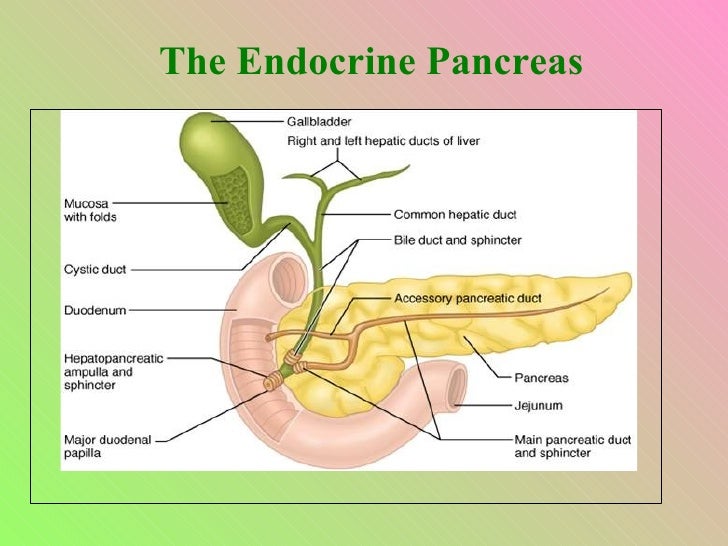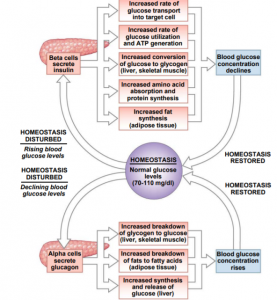The Pancreas
The pancreas lies behind the stomach and beneath the liver having both exocrine and endocrine cells. Endocrine cells organized into islets of Langerhans. Islet cells secrete insulin and glucagon. Insulin produced by beta cells of pancreas and Glucagon produced by alpha cells. Exocrine cells secrete enzyme-rich digestive fluid

Actions of Insulin and Glucagon
Insulin
• It lowers blood glucose concentration
• Increases glucose uptake, storage, and use by target cells
• Targets liver, muscle, fat cells
Mechanism of Glucose concentration
The normal glucose level in the body is 70-110 mg/dl. If there is a rise in the blood glucose level in the body, the beta cells of the pancreas are triggered to secrete insulin. This leads to the of glucose transport to the target cells. Increase level of glucose utilisation increases the ATP production in the cells which start converting glucose into glycogen in the liver and skeletal muscles. Now there is an increase absorption of amino acid and protein synthesis which increase the fat synthesis in the body. This now maintains the blood glucose level maintaining homeostasis in the body.
Glucagon
• Raises blood glucose concentration
• Increases glycogen breakdown and glucose synthesis
• Targets liver cells
Mechanism of Glucose concentration
If there is a fall in blood glucose level, the beta cells of the pancreas secrete glucagon which alternatively starts breaking down the glycogen to glucose in the liver and skeletal muscle. This increases the breakdown of fats to fatty acids in the adipose tissue. This now synthesizes and release glucose from the liver maintaining the blood glucose level and hence homeostasis in the body.

